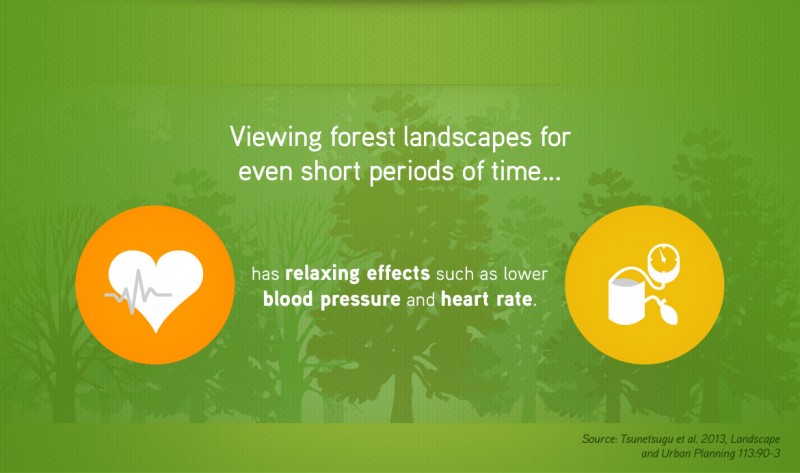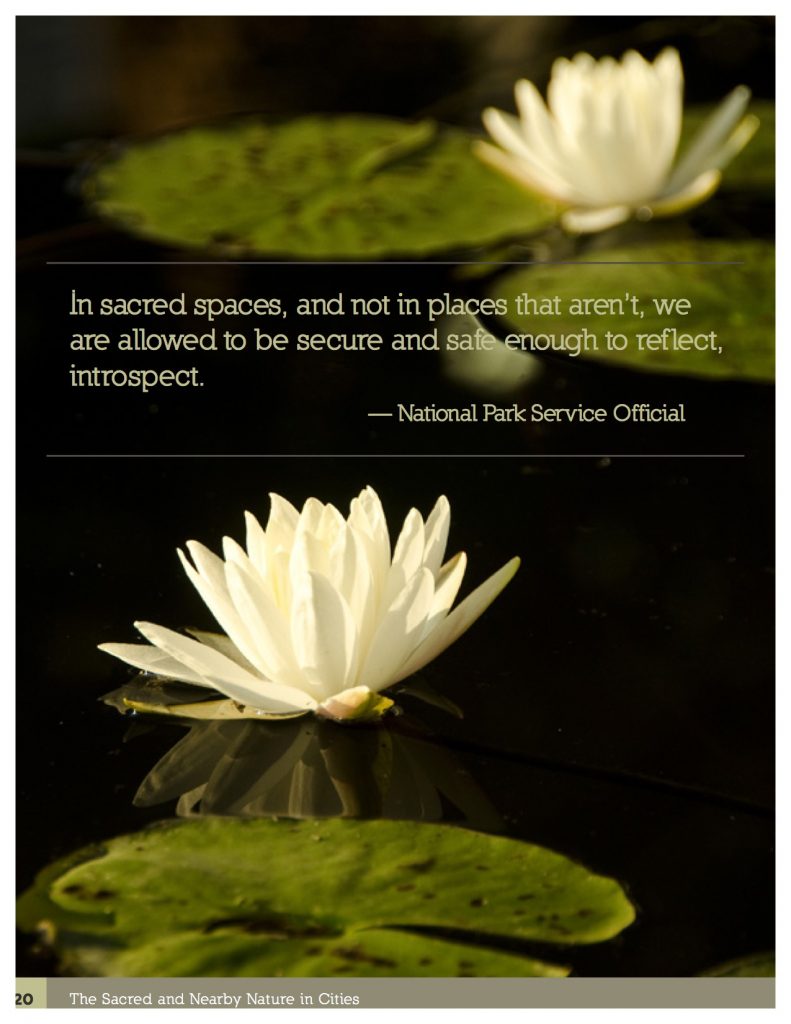In the past few decades a surge of scientific research provides evidence connecting human health with the experience of nearby nature in cities.
The experience of “being in nature”, personal and deeply felt, commonly evokes feelings of transformation and contemplation. Literature and traditions recount the importance of nature in personal realizations of inspiration, deeper connections, mindfulness, and extended social connections.
This personal experience is historically described as “sacred”.
With recognition given to the complexity and diversity of sacred experiences, there are many elements common across what sacred might include- mindfulness and meditation, focused breathing, time spent in nature and communal open spaces. Abundant scientific evidence establishes these elements as major contributors to health. And nature-based, open sacred spaces also contribute to large-scale community benefits such as reduced health care costs, reduced noise pollution, social cohesion, engaged citizenship, clean air, and environmental stability. As the human population becomes more urban and resource-stressed, civic sacred in everyday life is increasingly necessary.
Discussions in public about the experiences and emotions of the sacred may be challenging. The traditions of ‘separation of church and state’ in the U.S. can quickly sidetrack any discussions about the role of the sacred in public parks, gardens, and open spaces in cities. Formal interpretations of Sacred are connected to religion and theology, and are interlaced with faith-based organizations. A dictionary definition of the word sacred is: Dedicated, set apart, exclusively appropriated to some person or some special purpose. This is a common interpretation of sacred, though many people appreciate spiritual experiences that are enjoyed in less formal, secular settings.
A recent Nature Sacred publication, “The Sacred and Nearby Nature in Cities” featured interviews with professionals who plan and manage public green spaces. Their insight revealed the tensions:
“When trying to get sacred spaces [into policy or planning discussions] capitalize on the human element, find the common denominator. See yourself as a conduit for creating spaces. People allow [you] to act if they see the benefit for the community.”
—Community Artist. . . . with my work colleagues I’ll say something, and they hook into it or they don’t. That lets me know where to take the idea, or just drop it. Usually I don’t use the word ‘sacred’, but use beauty, serenity, relaxation. They can connect to these words and then we can talk more directly.
—Environmental Planner in Public Agency
In today’s busy, demanding urban environments, there is increasing need for civic, sacred spaces that provide opportunities for moments of quiet reflection and retreat. What is a vocabulary about civic sacred that might be used in public dialog, planning processes, and decision-making of local communities? How might people find a common language to advocate for the quiet and very meaningful experiences that nature in the city can offer?
“The Sacred and Nearby Nature in Cities” offers an extended set of ideas and language of the sacred in everyday nature encounters. The sources of this information are the Nature Sacred projects (sponsored by the TKF Foundation), scholarly and scientific literature, and focused interviews with public officials. Using the ideas presented, local planners and managers, civic leaders, and engaged citizens may be able to build support for parks, gardens, and open spaces in their communities as places that are open, valued, and provide many benefits for diverse users. We invite you to read this beautifully crafted publication and carry the ideas into meaningful projects for you and your community.


